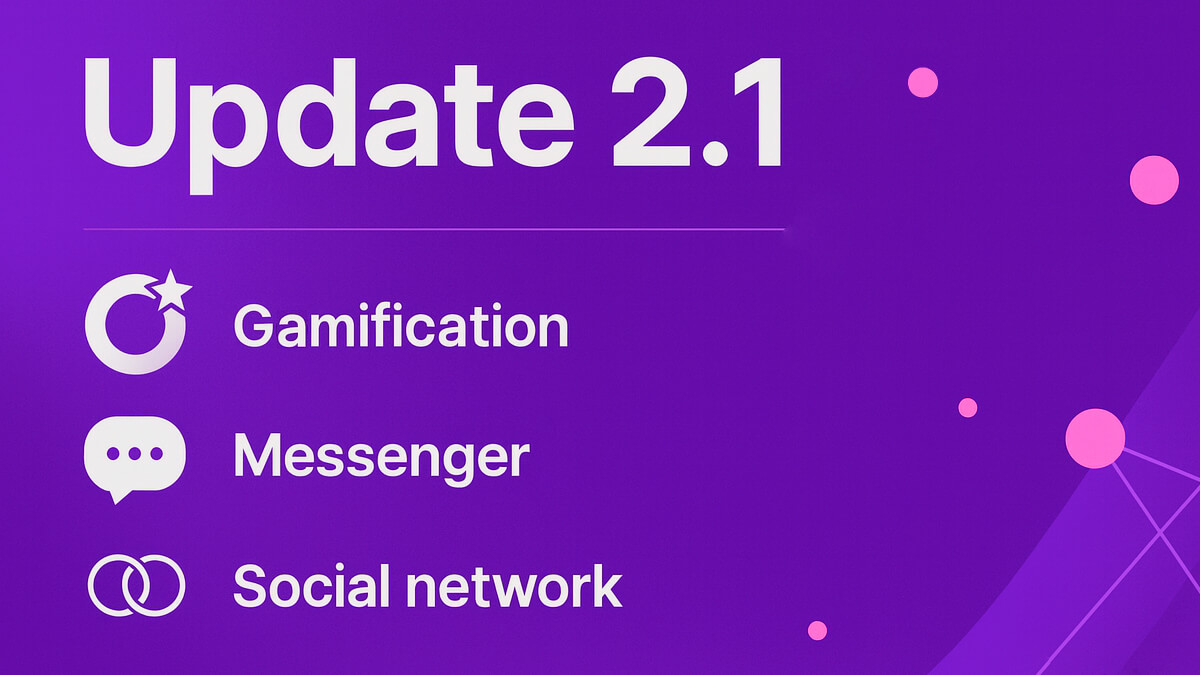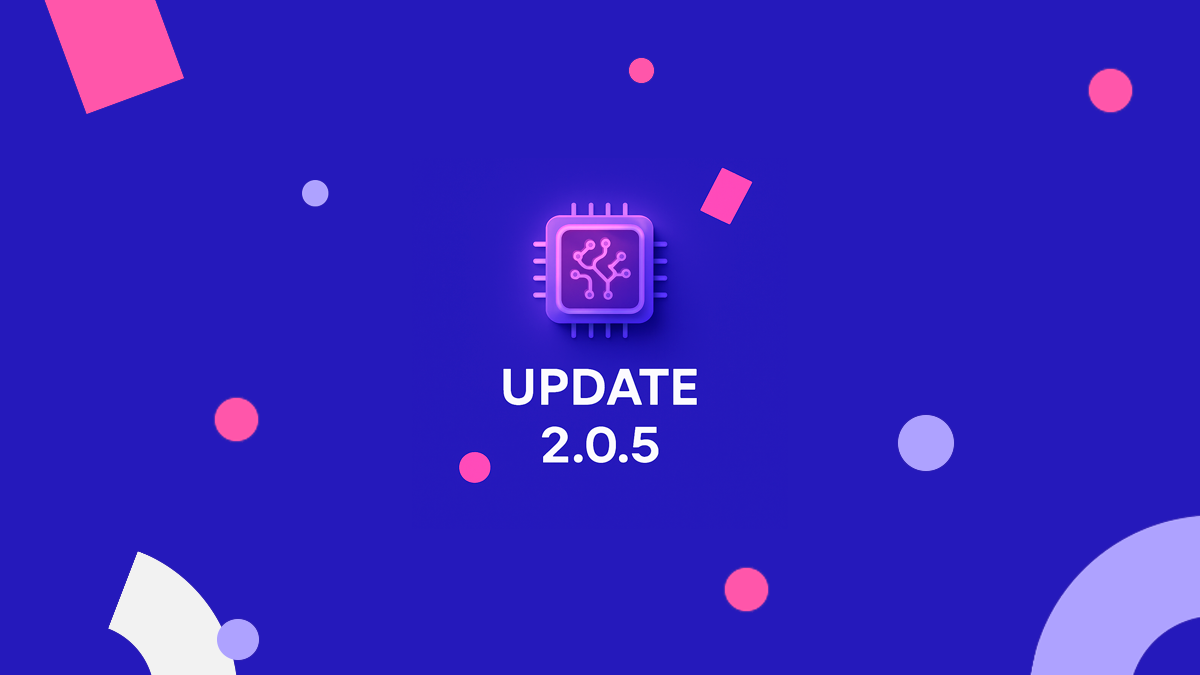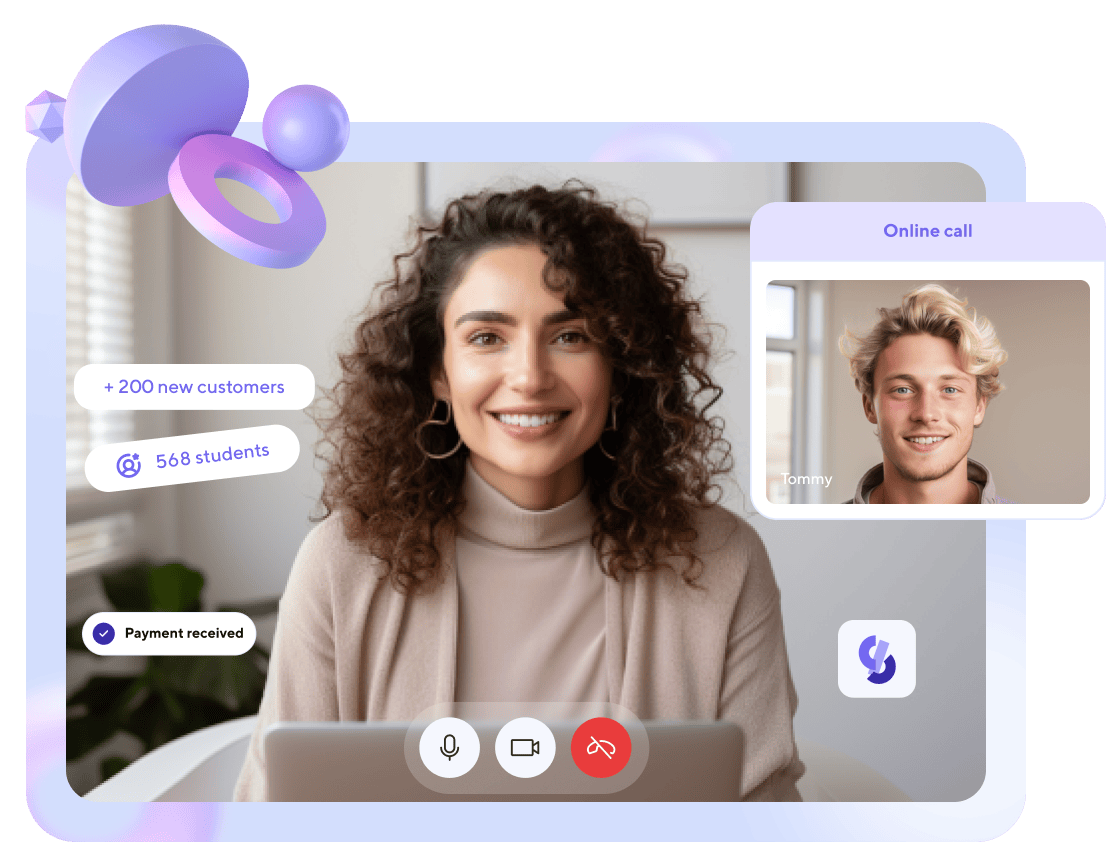4 ways to improve your course content

No matter what format you use to deliver your courses, the most important thing is high-quality and engaging content that meets the needs of your audience. To keep it at the right level, you don’t need to hire an improvement team. It’s enough to get into the habit of tracking whether the course is delivering what students want, so that you don’t lose your sense of the market and become an outsider at any time.
Regular course evaluation and analysis helps you understand what aspects need to be improved. At first, this work may seem like a huge task. However, if you divide it into smaller tasks and add it to your regular to-do list, it will turn into a good habit that will keep your courses up to date.
How to look for things to improve in a course
Check feedback from students, study their questions and concerns, and analyze your own materials. Pay attention to the parts where students have the most difficulty or need additional explanation. All this will help you understand which materials need to be improved, supplemented, or updated. Here are some steps you can take to do this:

- Study your target audience. Figure out who your primary audience is for your course. Understanding the needs and expectations of your participants will help you identify which content has become incomplete or outdated.
- Collect feedback from participants. Ask your course students for feedback. You can get it through a survey, feedback on the course platform, or even comments on social media. Analyzing the feedback will help you identify weaknesses or issues that need more attention.
- Compare with competitors. Conduct research in the competitive market by analyzing similar courses offered by other authors. Check if they have additional topics or features that can be useful for improving your content.
- Use analytics. If your course is available online, use analytical tools to track data on how participants interact with your content. Find out which materials have high attendance, which receive more comments or likes, and which may need additional improvements.
- Conduct a SWOT analysis. Use a SWOT analysis (Strengths, Weaknesses, Opportunities, and Threats) to evaluate your course. Determine which parts of the content need improvement, which parts can be expanded, and what opportunities there are to add new material.
- Get feedback all the time. Create a feedback channel with your course participants, such as email, telegram chat, or a community on any convenient social network. Constantly collect suggestions and questions from students and use them as a guide to improve your content.
On Softbook, for example, each online school has a section called “Feedback” where students can send their questions and suggestions about courses from their personal account.
Ways to improve courses
In general, analyzing course content involves a combination of studying the target audience, collecting feedback, comparing it to competitors, using analytics, SWOT analysis, and continuously collecting feedback. These steps will help you understand what materials need to be improved or updated to achieve better results from your content.
Once you have the information about what needs to be improved in your course, you can get to work. You can use the following approaches to improve your content:

- Use a variety of content formats. Including different types of content, such as video, audio, texts, illustrations, assignments, and others, helps to capture students’ attention and make learning more interesting and understandable. Vary the way you present the material to accommodate different learning styles.
- Introduce interactivity into courses. There’s nothing wrong with interactivity in live courses – constant contact with students and small questions and tasks during lessons can help keep it at the right level. Recorded courses are more static, but you can make them more interactive. Add tests, quizzes, self-study tasks, or opportunities to interact with other participants through forums or groups. In the Softbook Lesson Editor, you’ll find the tools you need to supplement your lessons, and in the Announcements section, you can let your students know about updates that have been made and are available in your course.
- Encourage active participation in live courses. If you offer live courses, provide opportunities for active participation. Include additional assignments, group projects, discussion sessions, or practical exercises to help students apply what they’ve learned in real-world situations. Recorded courses can get their own learning rhythm if you schedule and customize access to each lesson in it using a Softbook schedule, for example.
- Continuous improvement. As an expert in your field, you have unique knowledge and experience that you want to share with your audience. When creating your course, choose the format that best suits your goals and the needs of your students. This may be dictated by the different types of learning materials that will be included in the program.
Never rest on your laurels. Constantly work on improving the content. Update materials, add new topics, and take into account current trends and developments in your field. This will allow you to provide students with the most relevant and useful information. Make sure the course has a logical and consistent structure. The material should be easy to understand and divided into convenient portions. Provide clear assessment and feedback on assignments. Explain correct and incorrect answers so that students can correct their mistakes immediately. Provide accessible technical support for students who may encounter problems using the learning platform. Regularly test new teaching methods, improve materials, and change your approach based on the results. Be honest with students about course content, expectations, and requirements.
Conclusions:
The overall success of courses is determined by the quality and engagement of the content provided that meets the needs of the audience. To improve the quality of courses and increase their effectiveness, you need to use a combination of different methods of analyzing and updating content. First, it is important to understand the needs of the target audience and get feedback from course participants. Then, using a comparison with competitors, analytics, and SWOT analysis analytics and SWOT analysis, you can identify weaknesses in the content and opportunities for improvement. Constant feedback from students is key to gathering ideas and feedback for further improvements.
Improving courses involves using a variety of content formats, introducing interactivity, encouraging active participation, and continuous improvement. A logical and consistent structure, different teaching methods, and accessible technical support also play an important role in improving the learning process. Honest communication with students about the course content and expectations plays a key role in increasing their satisfaction and success.
Keep in mind that the interests, tastes, and needs of some of your audience will change regularly. These changes don’t happen by themselves. They are a consequence of, and a response to, global changes that occur in the world or in a particular field. Get in the habit of tracking events and making cause-and-effect connections between them. This can become your inspiration and a reliable source of tips for improving your courses.
Articles are good, but social media posts are faster!
Subscribe to us and be the first to receive tips and tricks
on promoting your online school!


Earn money on your knowledge and experience with
Softbook!
to the platform for setting up your own school!





